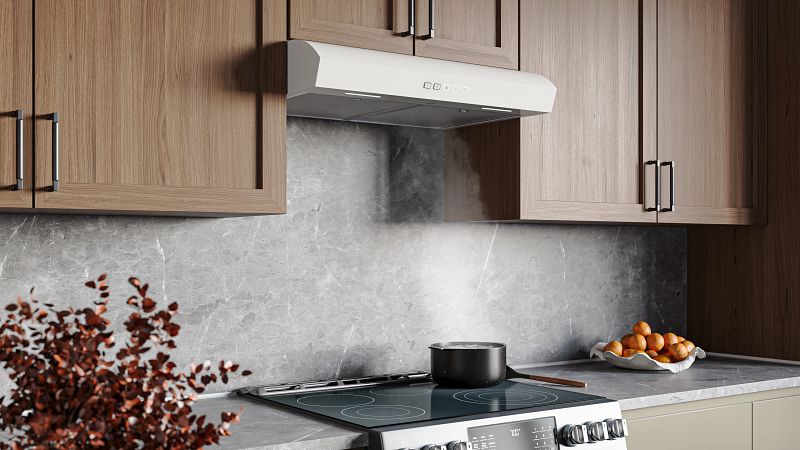Range Hoods and IAQ: Why Ventilation Is Essential for a Healthier Kitchen

We all know a friend’s home that has a familiar smell the moment you walk in. It may come from last night’s dinner, from pets or even from strong air fresheners. These moments reveal something important about indoor air and why ventilation matters more than most people realize.
A range hood does far more than remove visible fumes. It creates a healthier home environment and it shapes the comfort and feel of your entire living space. Its role goes well beyond basic air circulation because a well designed hood directly influences how fresh your kitchen smells, how clean your indoor air stays and how enjoyable it feels to cook.
The Three Essential Functions of a Range Hood
A range hood performs three core functions that protect your home, support healthier cooking and maintain a cleaner kitchen. These include capturing pollutants, protecting nearby surfaces and providing task lighting.
1. Capturing and Removing Pollutants 
Cooking is one of the leading causes of poor indoor air quality. Every time you sauté, boil, sear or fry, you release smoke, odors, moisture and airborne pollutants that can linger long after the meal is done.
A range hood removes these pollutants at the source, which helps prevent irritation from fumes and reduces exposure to harmful byproducts. It also minimizes excess moisture that encourages the growth of germs, bacteria and mold across surfaces.
2. Protecting Surrounding Surfaces
One of the most overlooked benefits of a range hood is how effectively it protects your kitchen surfaces. Kitchens are a leading location for house fires and a good hood helps shield cabinets and nearby materials from extreme heat or flare ups.
It also prevents grease particles from spreading across walls, shelves and cabinetry. Over time grease can become corrosive, which makes regular cooking far more damaging when ventilation is inadequate.
3. Providing Adequate Task Lighting
Task lighting is essential for safe cooking and a range hood often provides the brightest, most direct lighting over the cooktop. Whether you are monitoring simmering sauces, checking color on searing proteins or verifying doneness, clear visibility makes every step easier and safer.
Using Your Range Hood Effectively
Understanding the importance of a range hood is only half the equation. Proper usage is what ensures consistent air quality improvements.
Turn your hood on before you begin cooking to establish airflow, then adjust the fan speed as needed throughout the process. After you finish cooking, leave the hood running for at least ten minutes to clear any remaining smoke, odors and moisture.
Learn how to use your hood correctly here, “Range Hood Basics Explained: What They Do, Why They Matter and How to Use Them”.
Choosing the Right Range Hood
When shopping for a range hood, look for the Home Ventilating Institute (HVI) certification label. This confirms that the product meets the performance levels stated by the manufacturer.
There are many types of hoods, including undercabinet, chimney, island and insert models. Think carefully before choosing an over the range microwave because it is not a true range hood and often lacks proper capture capability especially over the front burners. A dedicated range hood is essential for maintaining a cleaner, safer and more comfortable kitchen.
Questions to Consider
-
How does your cooking style affect the type of range hood you need
-
What factors should you consider when choosing a range hood for your kitchen
-
Why is having a range hood important for your kitchen
-
What are the different types of range hoods available and how do you choose the right one for your needs
-
Are over-the-range hood microwaves a good substitute for a hood
What Comes Next
Now that you know the importance of having and using a range hood look for our next article “Kitchen Ventilation Buying Guide: How to Choose the Right Range Hood for Your Home” where we walk through the questions and ideas you will need to have before you begin the process of choosing an actual range hood. There are many decisions to make, but we will make the process easier for you.

 English
English
 English
English